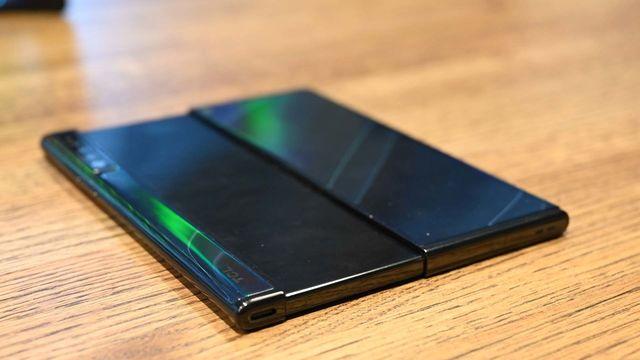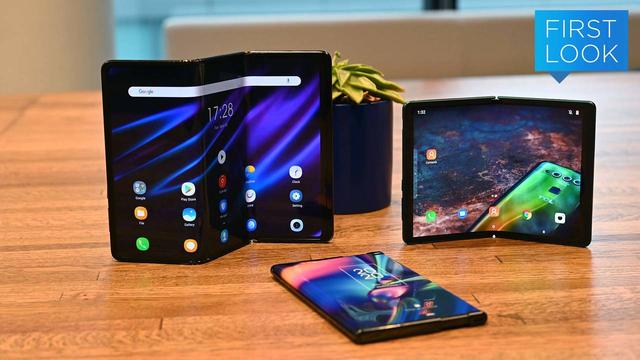
TCL Folding & Rewinding Smartphone--I Touched The Latest Prototype
TCL hasn't released a foldable smartphone yet, but new ideas seem to be coming down one after another. Prior to holding the world's largest mobile device exhibition, "Mobile World Congress," TCL unveiled two new folding smartphone concept machines. One is a model that folds the screen inward and outward, and the other is a model that can not only fold the screen but also expand it greatly.
TCL prototypes "360-degree Ultra Flex" (left) and "Fold N'Roll" courtesy of: Lisa Eadicicco / CNETTCL is a model that can fold the screen in both directions "360-degree Ultra Flex" (hereinafter referred to as "Ultra Flex"), and a model that can not only fold the screen but also wrap a part inside the main body or pull it out. We call it "Fold N'Roll". Both are still prototypes, are not out of the concept, and will not be commercialized as they are. According to TCL, Fold N'Roll has been demonstrated in China, but Ultra Flex is unveiled for the first time. These two prototypes show the direction of the foldable smartphone that TCL is trying to develop. In this market, which is almost monopolized by Apple and Samsung, TCL is looking for a place to differentiate itself.

Folding smartphones are still in their infancy, accounting for only 0.5% of the total smartphone market in 2021, according to a report from US market research firm International Data Corporation (IDC). However, this percentage is expected to rise to 1.8% by 2025. The report also predicts that folding smartphones will account for one-third of the high-priced "Android" smartphone market. With that in mind, it's not surprising that Samsung, Microsoft, and Motorola have launched a series of foldable smartphones over the last two years, and that Apple is developing a foldable iPhone.
Ultra Flex and Fold N'Roll concept machine
Of the two concept machines, the Ultra Flex is very similar to the folding devices currently on sale, such as Samsung's Galaxy Z Fold 3 and Microsoft's Surface Duo 2. Like these two models, the Ultra Flex can expand its internal display by opening the body like a book. It can also be folded outwards. If you fold it outward, the screen will come to the front, so you can operate it with one hand.
Ultra Flex (left) and Fold N'Roll Courtesy of: Lisa Eadicicco / CNETThe Ultra Flex has the impression that it is a combination of the Galaxy Z Fold 3 and the Surface Duo 2 in terms of design. Microsoft's Surface Duo 2 has two screens connected by a central hinge, while TCL's Ultra Flex is designed to fold one large screen in half. Like the Surface Duo 2, it can be folded backwards for multiple modes. The Ultra Flex is similar to Samsung's Galaxy Z Fold 3 in that it folds a single screen in half, but unlike the Ultra Flex and Surface Duo 2, Samsung's Galaxy Z Fold 3 can't be folded backwards.
Due to the thickness of the Ultra Flex, it is a little difficult to hold with one hand when it is completely folded backwards. In a real product, many people will use it with the screen fully open and like a tablet, or with an angle like a book. In addition, the presence of hinges is conspicuous in this prototype. It felt solid to the touch and could be easily folded both forward and backward. I didn't feel like it was going to break when I turned it back completely.
TCL's Ultra Flex uses an 8-inch AMOLED screen with a screen resolution of 2480 x 1860. This is larger than the Galaxy Z Fold 3's internal display (7.6 inches). However, since the power could not be turned on while using the demo machine, the actual feeling of use is unknown. Also, detailed specifications such as the processor of the terminal and the resolution of the camera have not been released yet. But when it comes to style and design, the direction TCL is aiming for with foldable smartphones is well understood.
